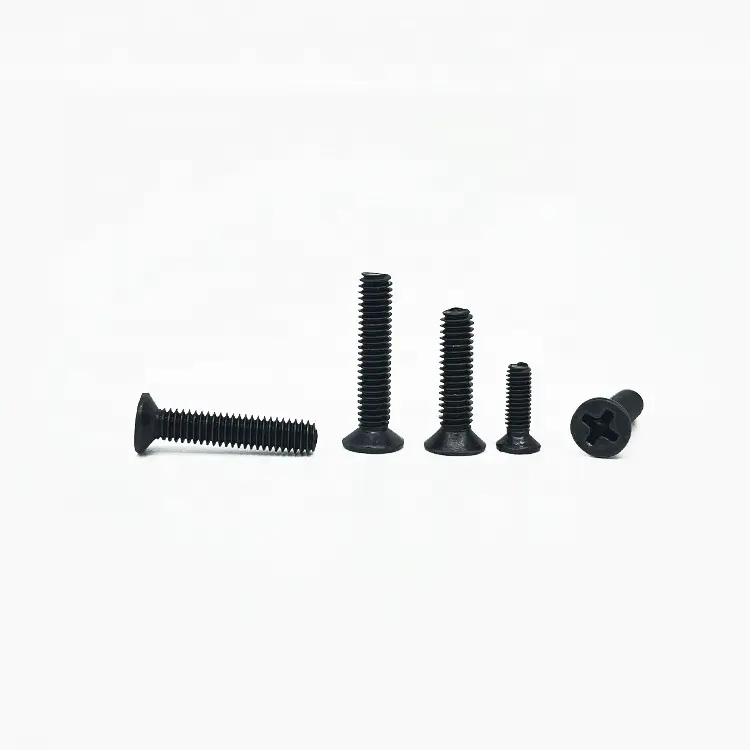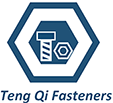Machine Screw
A machine screw is a type of threaded fastener with a blunt or flat-ended tip, designed to be threaded into a tapped hole or nut. Unlike wood screws, which are designed to thread into wood, machine screws are used to fasten metal parts together or secure components in place.
Machine screws come in various sizes, materials, and head types (such as flat head, round head, pan head, etc.), and they are typically used with a corresponding nut or tapped hole. They play a crucial role in many industries and applications, including electronics, machinery, automotive, and construction, where precision and secure fastening are essential.

Type of Machine Screw:
Machine screws come in various types based on their head style, drive type, and other characteristics. Here are some common types of machine screws:
| Flat Head Machine Screw: | These screws have a flat top surface with a countersunk head, allowing them to sit flush with the surface when installed. They are often used when a flush finish is desired. |
| Round Head Machine Screw: | These screws have a rounded top surface and a cylindrical head. They are used in applications where a more decorative or rounded appearance is preferred. |
| Pan Head Machine Screw: | Pan head screws have a rounded, slightly flattened head with a larger diameter than the screw's body. They provide a larger contact area and are commonly used in applications where a larger surface area is needed for tightening. |
| Truss Head Machine Screw: | Truss head screws have a low-profile, wide head that provides a larger load-bearing surface. They are suitable for applications where a larger head is required, but space is limited. |
| Phillips Head (Cross Recess) Machine Screw: | These screws have a cross-shaped recess on the head, requiring a Phillips screwdriver for installation. They are one of the most common types of drive styles. |
| Slotted Head Machine Screw: | Slotted screws have a single straight slot on the head, allowing them to be tightened or loosened with a flat-blade screwdriver. They are less common in industrial applications due to the potential for the screwdriver to slip out. |
| Hex Head Machine Screw: | Hex head screws have a hexagonal-shaped head that requires a wrench or socket for installation. They provide better torque control and are commonly used in machinery and equipment assembly. |
| Socket Head Cap Screw: | Also known as Allen screws, these screws have a cylindrical head with a hexagonal socket (Allen key) recess. They offer a clean appearance and are commonly used in applications where a low-profile head is required. |
| Button Head Machine Screw: | Button head screws have a low-profile rounded head with a wide diameter and a socket recess. They provide a clean look and are often used in applications where aesthetics are important. |
| Oval Head Machine Screw: | Oval head screws have an elliptical-shaped head that sits flush or slightly above the surface. They are used for decorative purposes and have a smooth appearance. |
The choice of screw type depends on factors such as the application’s requirements, the appearance desired, and the tools available for installation.
Specification:
The specifications of a machine screw can vary based on factors such as its size, material, head style, and intended application. Here are some common specifications that are often provided for machine screws:
| Size: | Machine screws are typically specified by their thread size, which includes the diameter and thread pitch. For example, a common specification might be "M4 x 0.7," where "M4" indicates a 4mm diameter and "0.7" indicates a thread pitch of 0.7mm. |
| Length: | The length of the machine screw is measured from the tip to the end of the threaded portion. It is often specified in millimeters or inches. |
| Material: | Machine screws can be made from various materials, including steel, stainless steel, brass, aluminum, and more. The material choice depends on factors such as corrosion resistance, strength, and the application environment. |
| Head Style: | The head style of the machine screw can vary, as mentioned earlier, and might include flat head, round head, pan head, truss head, and more. |
| Drive Type: | The drive type refers to the shape of the recess on the screw's head that allows a tool to turn it. Common drive types include Phillips, slotted, hex (Allen), and torx. |
| Thread Type: | Machine screws can have different thread types, such as machine screw threads, which are finer, or self-tapping threads, which are designed to cut into the material they are driven into. |
| Finish: | Some machine screws may have a specific finish applied to them for aesthetics or corrosion resistance, such as zinc plating, black oxide coating, or passivation for stainless steel. |
| Tension Strength: | This is the maximum amount of tensile (pulling) force a screw can withstand before breaking. It depends largely on the material the screw is made of. |
Application:
Machine screws have a wide range of applications across various industries due to their versatility and ability to securely fasten components together. Some common applications of machine screws include:
| Electronics: | Machine screws are used to secure electronic components, circuit boards, and panels within electronic devices and equipment. |
| Machinery and Manufacturing: | They are used in the assembly of machinery, equipment, and industrial components, such as securing motor mounts, gearboxes, and mechanical parts. |
| Automotive: | Machine screws are employed in the assembly of vehicles, securing components such as engine parts, interior panels, and exterior trim. |
| Construction: | In the construction industry, machine screws are used to fasten materials such as metal framing, structural components, and building hardware. |
| Furniture: | Machine screws are utilized in the assembly of furniture, including joining parts of wooden or metal furniture together. |
| Appliances: | They are used to assemble household appliances, securing parts like handles, hinges, and brackets. |
| Aerospace: | High-strength machine screws are employed in aerospace applications, including the assembly of aircraft structures and components. |
| Marine: | Machine screws are used in the construction and assembly of boats and ships, securing various parts and components. |
| Electrical Enclosures: | They secure electrical enclosures and control panels, ensuring that sensitive electrical equipment is properly housed. |
| Medical Equipment: | In the medical industry, machine screws are used to assemble medical devices and equipment, adhering to strict quality and safety standards. |
| onsumer Electronics: | They are used in the assembly of consumer electronics such as computers, smartphones, and appliances. |
Machine screws are found in virtually every industry where precise and secure fastening is needed. The choice of machine screw type, size, and material depends on the specific application and the requirements of the project.
Surface treatment of choice for machine screw:
| Surface treament | Feature | Benefits |
|---|---|---|
| Black Oxide Coating | Creates a dark or black surface finish through a chemical reaction. | Enhances appearance, provides some corrosion resistance, reduces glare, and can offer moderate wear resistance. |
| Zinc Plating (Electroplating) | Provides a thin layer of zinc coating on the surface. | Offers moderate corrosion resistance, enhances appearance, and can act as a sacrificial barrier against corrosion. |
| Hot-Dip Galvanizing | Immerses the bolts and nuts in molten zinc to create a thicker coating. | Provides strong corrosion protection, suitable for outdoor and harsh environments, forms a durable and rugged coating. |
| Mechanical Galvanizing | Uses mechanical means to apply a zinc coating. | Offers good corrosion protection, especially for high-strength bolts, less risk of hydrogen embrittlement compared to hot-dip galvanizing. |
| Dacromet Coating | A sacrificial coating that includes a mix of zinc and aluminum flakes. | Offers exceptional corrosion resistance, suitable for extreme conditions, provides consistent friction control, and maintains coating integrity even under mechanical stress. |
How do we ensure the quality?
In a world where connections matter, Ningbo Teng Qi Fasteners is more than just a fasteners supplier and manufacturer. We are architects of stability, builders of relationships, and champions of your success. From skyscrapers that reach for the sky to machines that power industries, our fasteners form the backbone of progress. When you choose Ningbo Teng Qi Fasteners, you choose unwavering quality, exceptional service, and a partner who understands that every bolt holds a piece of your vision.
| Control Method | Detail |
|---|---|
| Material Inspection: | Verify the material's composition, heat treatment, and quality upon receipt. Conduct metallurgical analysis to ensure the material properties meet the standards. |
| Process Control: | Implement strict process control measures for heat treatment, machining, threading, and any other manufacturing steps. Maintain consistent process parameters to ensure uniform quality. |
| Inspection Points: | Introduce inspection points at various stages of manufacturing to check for defects, dimensions, and quality. Inspect threading, dimensions, surface finish, and other critical parameters. |
| Sampling and Testing: | Regularly sample products for testing, such as tensile testing, hardness testing, and metallurgical analysis, to ensure they meet the required specifications. |
| Thread Inspection: | Thoroughly inspect threading using proper thread gauges to ensure accurate dimensions and fit with mating components. |
| Traceability: | Implement a traceability system to track each fasteners journey from raw material to final product. This aids in accountability and recalls if necessary. |

